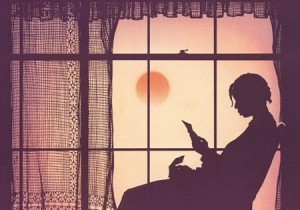
In “Why Punishment is Purple,” Josh Page astutely updates the political sociology of mass incarceration. The story of conservative/Republican success in using crime as a wedge issue was told first by political observers and then more rigorously by sociologists and criminologists. Republicans saw fear of violent crime and, frankly, any kind of crime they associated with declining property values as an emerging issue for white, blue collar Democrats who were running out of benefits they could get from a New Deal type state and whose anxieties about race were increasingly out of bounds in the Democratic Party. After Bill Clinton, however, Republicans lost their advantage. Today, some Republicans are outdistancing Democrats in offering innovative alternatives to the penal state. Page turns to California to demonstrate the political dynamics in more detail.
Page believes that the latest news in this area is not likely to mark a new political competition to bring down imprisonment rates and dismantle the institutional logics of crime fear as citizenship. Instead, politicians will tinker in the shadow of Willie Horton, afraid to do more than experiment with decarcerating the shallow end of the felony pool. Purple America, whether governed by Obama or Romney, is likely to remain a highly incarcerated America.
There is little I can disagree with in this overall depressing picture. The Republican edge on crime was, in my view, never all that solid. Robert Kennedy was one of the first really effective dealers in the new politics of crime, and he managed to blend neo-welfarist strategies (for juveniles) with a preparedness to back a tough police response to urban crime and violence. While the bullets that brought him down prevented us from thinking of RFK as the “war on crime” president he might have been instead of Nixon, it was not, I think, a lack of understanding that prevented Democrats from taking on crime as a close study of their policy ideas in the period would show. Instead, the Democrats were hampered by truly mixed reactions to the prospects of enlarging and empowering urban police forces at a time when many liberal Democrats, black and white, feared the police as much or more than crime (this was post-‘68).
In contrast, while Republicans had no fear of the police, neither did they have a strong desire to invest in an urban police force. Indeed, as the late Bill Stuntz emphasizes in his great, posthumously published Collapse of the American Criminal Justice and as my colleague Justin McCrary has shown in his work, police were largely ignored after 1980 in favor of mass incarceration, a strategy that held strong appeals for white suburban homeowners and little that Democrats or liberals found inherently troubling.
 Perhaps like Shug in The Color Purple, I’m just at a stage of life where I’m more ready to seek out hope. I do think some of the underlying cultural politics that made mass incarceration such an appealing tool have been eroded. One is “white flight.” So long as white families saw their future in ever more distant satellite suburbs with exclusionary zoning and other segregation strategies, they looked to mass incarceration to express their anxieties about urban crime and showed little interest in supporting urban policing. But, as research by Reynolds Farley and his colleagues suggests (see “The Waning of American Apartheid,” Contexts, Summer 2011), whites today are far less ready to move away from minority populations than they were in the ‘80s. The energy crisis and a backlash against suburban automobility are also fueling an urban comeback, and its fate is surely tied up with the waning of apartheid and, in turn, with fear of crime. But while fear or its shadow will remain a powerful driver, both have made a police vs. prison strategy more plausible than it has been in a couple of generations. Of course, that assumes we can convince police to stop acting in racist and counter-productive ways to degrade young men of color and pull them into the prison system.
Perhaps like Shug in The Color Purple, I’m just at a stage of life where I’m more ready to seek out hope. I do think some of the underlying cultural politics that made mass incarceration such an appealing tool have been eroded. One is “white flight.” So long as white families saw their future in ever more distant satellite suburbs with exclusionary zoning and other segregation strategies, they looked to mass incarceration to express their anxieties about urban crime and showed little interest in supporting urban policing. But, as research by Reynolds Farley and his colleagues suggests (see “The Waning of American Apartheid,” Contexts, Summer 2011), whites today are far less ready to move away from minority populations than they were in the ‘80s. The energy crisis and a backlash against suburban automobility are also fueling an urban comeback, and its fate is surely tied up with the waning of apartheid and, in turn, with fear of crime. But while fear or its shadow will remain a powerful driver, both have made a police vs. prison strategy more plausible than it has been in a couple of generations. Of course, that assumes we can convince police to stop acting in racist and counter-productive ways to degrade young men of color and pull them into the prison system.
Another reason for optimism is that the moral legitimacy of mass incarceration is more vulnerable than it has been in decades. Despite tags like “the new Jim Crow”, mass incarceration retains its legitimacy for many Americans, white and non-white, who see it as a way to hold “dangerous men, securely, in humane conditions” (as the terms of an important Supreme Court opinion, Farmer v. Brennan, put it). However, the truth about American prisons, as revealed to the nation by Justice Kennedy’s majority opinion in the California prison health care crisis case Brown v. Plata last year, is that they increasingly hold a chronically ill and aging population—more at risk than posing a risk—and that they are neither securely nor humanely held. All of this has the power to erode mass imprisonment’s legitimacy.
This “Abu Ghraib moment” is already affecting the penal imaginary of the elite (just look at the number of stories on the qualitative dimension of incarceration that have come out since Brown). This isn’t the same as reaching the general public, but it is a hopeful sign. The crime-fear wave of the ‘60s circulated first among journalists, lawyers, and other elites (who saw a largely fictional crime wave in the 1950s), then spread to the wider public. The humanitarian response to mass incarceration, so evident in Justice Kennedy’s mention of torture and emphatic embrace of dignity as the animating meaning of the Eighth Amendment, too may also spread from the consciousness of legal elites to a broader audience.

Comments